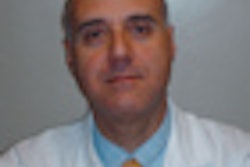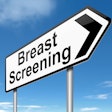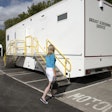To remain viable in an environment of healthcare reform, breast care centers must track the quality of their services, especially their callback rates and the effectiveness of their biopsy procedures, according to a presentation given Sunday at the annual National Consortium of Breast Centers (NCBC) meeting in Las Vegas.
Healthcare reform is here to stay, and the old fee-for-service model is phasing out. Going forward, the focus will be on evidence-based medicine and better coordination of care to improve quality, access, and cost, said presenter Dr. Gary Levine, director of breast imaging at Hoag Breast Care Center in Newport Beach, CA. Levine cited a recent announcement from the U.S. Department of Health and Human Services, which last April declared that "Medicare will gradually shift from payments based on volume to payments based on performance."
"[Medicare's] strategy will be to resist hospital price increases and thereby increase the pressure on hospitals to improve efficiency," Levine said. "And commercial payors will be using tools, such as value-based purchasing, to address variability in cost and quality."
As a cautionary tale, Levine cited results from a 2009 study that found an overall open-surgical biopsy rate of more than 30% at two New York City teaching hospitals. This was despite the fact that in 2006 the American College of Surgeons stated that the first step in diagnosing a breast lesion detected with imaging should be a "minimally invasive core-needle breast biopsy."
Also, surgical excisional biopsy is five times more expensive than needle biopsy, requires a longer recovery time, and can result in parenchymal scarring, which can complicate a woman's diagnosis and treatment down the line (Journal of the American College of Surgeons, January 2009, Vol. 208:1, pp. 75-78).
"At Hoag there were 1,488 total breast biopsies in 2008," Levine said. "Of these, 1,425 were needle biopsy and 63 were open-surgical biopsy. That's a 4.2% surgical biopsy rate."
Action steps needed
Can a breast center really retain or improve quality of care while also reducing costs? Yes, Levine said, but tracking data is crucial. He encouraged NCBC session attendees to know their quality and outcomes data.
"Measure it; benchmark it, both externally and internally; act on it; and measure it again," he said.
One way to improve quality is to lower the screening recall rate, Levine said. Forty million screening mammograms are performed in the U.S. each year; if 12% of women are called back (the national average), then 4.8 million women will have to return for a second exam. Hoag's present callback rate is 6%, Levine said, so that means 2.4 million women screened annually would be called back. This would save $600 million each year over the national average (at an average cost of $250 per patient for additional imaging).
Another key way to improve quality is to improve the positive predictive value of an exam at biopsy, and this happens with subspecialization, Levine said.
"The national average [positive predictive value] at biopsy is 20%," he said. "At Hoag it's 52%."
There are 1.6 million breast biopsies performed annually in the U.S. If the number of breast biopsies could be reduced by half through subspecialization (assuming the average cost of a breast biopsy is $2,000, the average of the cost of minimally invasive breast biopsy and surgical excision), the cost savings would be $1.6 billion, Levine said. If the number of breast biopsies could be reduced by a third through subspecialization, the cost savings would be $800 million.
"The average cost of an image-guided needle biopsy is $1,000, and the average cost of open-surgical biopsy is $5,000," Levine said. "If 95% of surgical biopsies were converted to needle biopsy, the U.S. healthcare system would save $1.9 billion. Of course, this number doesn't include indirect costs associated with surgical biopsy, including time women lose from work for recovery."
The bottom line? Breast care centers should encourage subspecialization and interdisciplinary care, which translate directly to improved quality of care.
"Hospitals and physicians who do not provide coordinated care that measurably improves cost and quality will be paid less than those who do," Levine said. "Going forward, quality data will be tied to reimbursement."




















